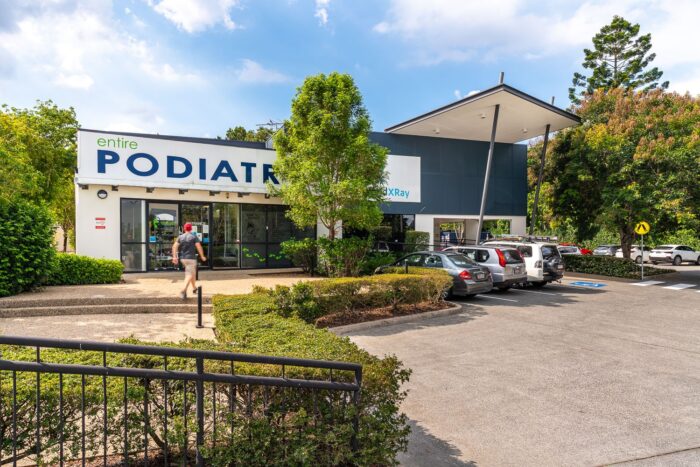Commercial
Understanding lease incentives in Australian commercial real estate
Published
18 June, 2024

If you’ve imagined yourself as a commercial landlord, understanding commercial lease incentives is a must before buying a commercial asset. The lease, after all, underpins the property’s return, and knowing how to leverage incentives can not only help maximise them but can ensure you secure a high-quality tenant.
This guide will break down what commercial property lease incentives are, highlight what a good incentive level in commercial property might be and show how tenant incentives in commercial property can be a benefit to you and your property. Let’s get to it.
What are lease incentives in commercial property?
Commercial property lease incentives are benefits offered by landlords to attract tenants to their properties. Not every leasing deal will include incentives (as so many factors influence their relevance). Yet these incentives can be crucial in markets where competition is high and tenant demand fluctuates.

Here are some common examples of lease incentives in Australia:
- Rent-free periods: An agreed period, perhaps a few months, that the tenant pays no rent. This can help a new tenant offset moving costs or initial setup expenses.
- Fit-out contributions: Financial contributions from the landlord towards the cost of improving the premises or reconfiguring it to meet the tenant’s specifications.
- Rental discounts: Reduced rent for the initial period of occupancy.
- Cash payments: Lump sum payments from the landlord to the tenant upon signing the lease. This is often used to cover relocation costs or other expenses. Understandably, this is a popular option with tenants.
- Early termination options: Flexibility for tenants to terminate the lease early under certain conditions. This might be appealing for businesses uncertain about their long-term space needs.
Determining a good incentive level in commercial property
Landlords should never guess what a good incentive is for their targeted tenant. Research and a solid understanding of the market will be a major determining factor. A good incentive level in commercial property depends on a range of things, each as important as the next:
- Market conditions: In a tenant’s market (where supply exceeds demand), landlords might need to offer more appetising incentives to attract tenants. The opposite also rings true, where landlords can withdraw incentives and even charge higher rents than in periods of high supply and low demand.
- Property location and quality: Prime locations and high-grade properties may require fewer incentives to attract tenants. Proactive landlords might even spruce up their assets, potentially seeing their lease incentives fall and property’s appeal rise.
- Lease term: Longer lease terms might justify higher incentives, as the longer tenure and greater certainty of future rent provides great comfort to a landlord of a vacant property.
- Tenant profile: If you’re wanting that perfect tenant to take up occupancy—maybe a government department or essential services occupant—then higher incentives may be required for the privilege. After all, their presence adds value and prestige to the property.
- Competitor offerings: By understanding what competing properties are offering, landlords can better structure their incentives and create a more relevant offer to their incoming tenants.
How incentives can benefit your investment

Lease incentives can attract high-quality tenants to your commercial premises.
It’s not all give. Offering incentives to your leasing prospects can have great benefits for your property and your bottom line. Here’s how incentives can benefit your investment:
- Quality tenants: Incentives allow you to attract reputable tenants—national and international operators with a stellar track record—who are perhaps more likely to stay long-term.
- Enhanced property appeal: Incentives can make your property more competitive in the market. And in a tenants’ market, this is key. Sometimes you need to stand out from the crowd in order to ensure not just an occupied property, but a property that’s occupied by the right tenant.
- Increased future rental: Incentives might initially eat away at your net rental income, but by securing a quality tenant, they can indirectly lead to higher rental rates, when the tenant is settled in the property and market rents increase.
- Improved lease negotiations: Offering incentives can of course be a great tool in lease negotiations, giving you the flexibility to pull particular levers on the lease agreement and secure the most desirable (and relevant) tenants.
Make no mistake, investing in commercial real estate comes with its complexities. Understanding commercial property lease incentives and determining a good incentive level in commercial property are just two of them. That’s why many investors choose to share the investment journey, entrusting their capital to a property investment company.

For over a decade, Properties & Pathways has been one of the most trusted providers of unlisted property trusts in Australia. Whether you’re new to investing in commercial real estate or have lost count of your transactions, you can make our expertise, network and track record yours to leverage.
Looking for excellent returns from high quality Australian commercial real estate? Contact us today or subscribe for investment updates. We’ll let you know when our next opportunity is around the corner.
Disclaimer: The information provided in this article is for general informational purposes only and should not be considered financial or investment advice. Always consult with a qualified professional before making any investment decisions.



